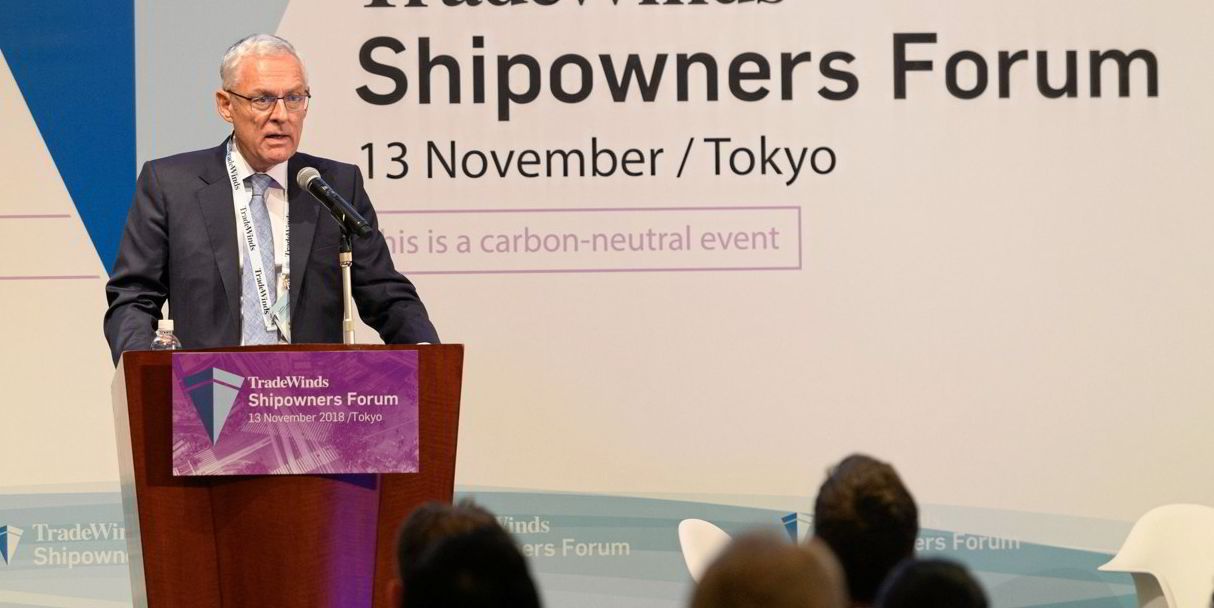Would a global tax on shipping’s carbon output hurt developing economies?
Analysis by Clarksons Research and commissioned by a shipowners group has found that a levy that is much higher than $100 per tonne of CO2 would likely be viewed by some countries as having a disproportionally negative impact on some trades.
But the full range of carbon levy levels — up to $400 per tonne — that are under consideration at the International Maritime Organization would have a more modest impact on the cost of delivered cargo, a measure that is more relevant to the impact on the economies of member states.
“All of the levy quantum analysed, regardless of the trade and/or cargo type to which they apply, generally seem to fall within the average monthly volatility in the price of delivered cargo during 2021,” the research arm of shipbroking giant Clarksons said.
The analysis, commissioned by the International Chamber of Shipping (ICS), was submitted to the IMO as part of ongoing discussions at the UN shipping regulator over how to adopt market-based measures that will help push shipping towards the body’s decarbonisation targets.
The document was submitted to an IMO working group meeting held last week in preparation for a June gathering of the body’s Marine Environment Protection Committee.
As TradeWinds has reported, the impact on nations is shaping the discussion on a carbon price, with a recent proposal by Japan seeking to allocate revenue to developing countries and small island countries.
The ICS, made up of shipowners groups, has already come out in favour of a simple carbon levy and is opposing a cap-and-trade scheme, such as a proposal by Norway that would effectively create a global emissions trading scheme.
The group has yet to say how much that levy should be, though the organisation has said it favours a lower cost of carbon that rises later as zero-emission technology becomes available.
The Marshall Islands and Solomon Islands have proposed a levy of $100 per tonne of CO2, the equivalent of $313 per tonne of fuel oil, but have said the price will need to rise in time to $250 to $300 per tonne.
Meanwhile, the Clarksons Research analysis also pointed to a greater impact for geographically remote countries and those with less connectivity to main markets.

For iron ore shipped from Brazil to China, for example, a levy of $100 per tonne of CO2 would add 4% to the average delivered price of the commodity, while a $400 levy would add 15.8%.
That price is different for iron ore shipped for nearer Australia, with the cost of delivered iron ore rising between 1.3% to 5.4% at those levy ranges.
The analysis found that a carbon levy would not have an adverse impact on food security or disaster response.
European Union countries have acknowledged that a levy, combined with a greenhouse gas fuel standard, could achieve emissions reduction goals.

But a paper filed to the IMO working group in March said a cap-and-trade scheme would do more to move shipping towards a zero-emissions goal in 2050, a revised target that is still under discussion. And a cap-and-trade scheme would be in line with the EU’s own efforts after the bloc’s parliament recently voted to approve adding shipping to its Emissions Trading System (ETS).
“A combination of a GFS [greenhouse gas fuel standard] with a cap-and-trade scheme can provide most certainty in terms of the trajectory for absolute level of emission reduction to be achieved in the mid to long-term, in line with the objective of the IMO GHG Strategy to be revised,” EU countries and the European Commission said in a joint filing to the IMO.

But the carbon price under a cap-and-trade scheme would fluctuate, meaning that a levy would provide more certainty on the price of carbon and revenue, the European nations said.
ICS has argued that the levy’s advantage over cap and trade is the complete control over the price of carbon.
This year alone, carbon allowances under the EU ETS swung from €40 per tonne in March 2021 ($48 at the time) to a peak of €96 per tonne in February of this year, before pulling back to €66 on 7 March 2022, the group said in its IMO submission.
“The cost of emission allowances under a cap-and-trade system would be variable, and presumably determined by a market that could be subject to considerable volatility outside the full control of the [IMO],” ICS said.




